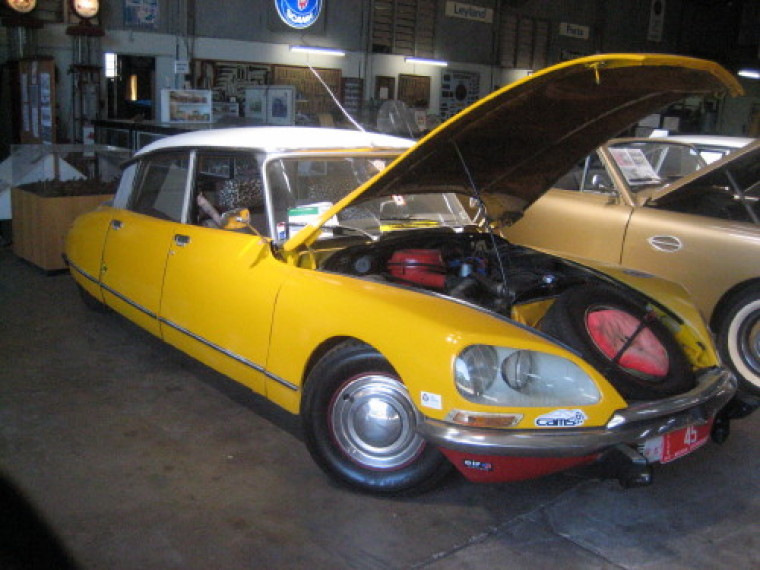
Although this is not part of the Mensheds Australia organisation that was started in 2002, to co-ordinate and improve communication between the 30 or so groups operating Men's sheds up to that time, it has all the positive hallmarks of the Men's Shed movement.
All the information you may need about this organisation in your area of Australia is available on their excellent website (the page on history is linked below, but it is easy to click on any of the other pages on that site if you want more specific information)
http://www.mensheds.com.au/index.php?id=42
The first portion of this particular men's shed is devoted to those wanting to undertake, or learn about, repairs. There are long wide benches to accommodate everything from welding large steel beams to very intricate soldering jobs.
The second area is the display area, which covers a broad cross section of interests that have traditionally been seen as 'men's', although of course, this display is more like a museum, and is of historical interest and fascinating to everyone who visits this shed.
There is a railway steam engine, a farming tractor steam engine, numerous vintage and veteran motor vehicles, old time petrol pumps, farm vehicles, military vehicles and even a Citroen DS with the 'London to Sydney' race sticker.
There is also a first model Land Rover on display, the short-short wheel base and adjacent to it is a WWII truck with its military grey in full colour; as well as several motor vehicles of the turn of the century for the real enthusiast and one-ton trucks of the twenties which transported anything from fruit and vegies to heavier white goods.
But, like all those in the men's sheds Australia movement, this is a working shed, with men at work on many tasks, while tourists walk around freely viewing the displays. It is a celebration of men and what they do with their hands, and allowing them to be creative in engineering projects and other endeavours, while being able to talk together and feel they belong to a community and their views, as well as their work, are valued.
In our modern society, men have traditionally been dealt the 'working straw' from the time they are born. Everything is geared for a man to find work and become a provider; and at least up until the questioning of social values in the 1960s, when many of today's retired men would already have been in the workforce, the education system and family expectations were built around this essential fact.
To some men, this has been burdensome; it seemed like the 'short straw'. To others, more secure in their social position, their retirement has brought with it a loss of identity and a seeming loss of respect from their families and the wider society.
This men's shed is not only a representation of all that is good and honourable about the creativity of men, but it also helps men to retain their pride in having a useful place in our society, even if they are 'temporarily out of work', in ill-health or retired.
Recent research has identified factors that derail men; one of the aims of Mensheds Australia is to hint at some of these factors, and allow men to talk about them among themselves, as their perceived position as the 'strength' of the family often makes it difficult for them to even think of approaching professionals for help.
Darwin has the highest male suicide rate in Australia; and Australia has the second highest rate in the world. The Men's Shed in Darwin is a shining example of the way men can be brought together for mutual support and comfort; and as an added benefit those who have never used 'traditional' men's skills can learn something new (and those who have the skills and are no longer using them can teach them to others).
All participants can grow stronger, and be proud of in their times of loneliness or distress.
Mark Tronson recommends a visit to this shed, for anyone touring the vicinity of Darwin.